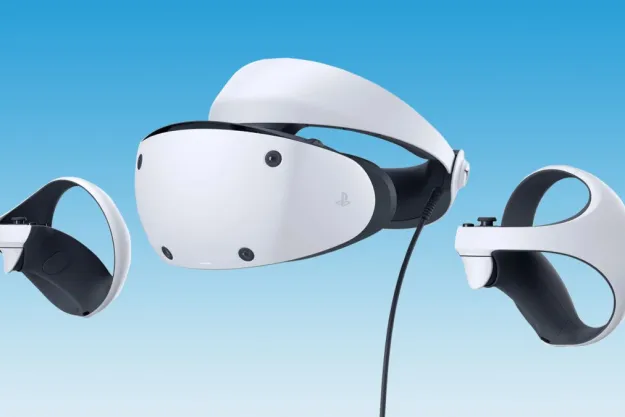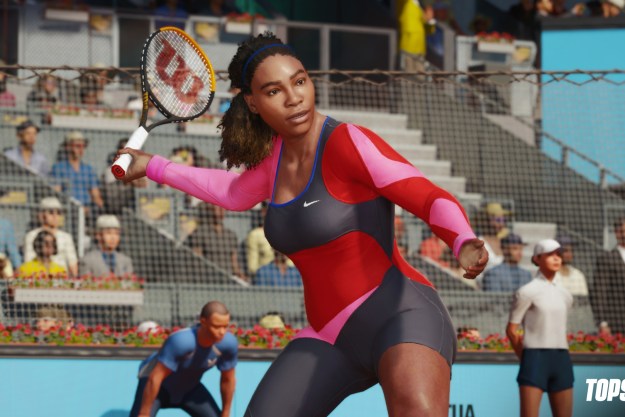The Guardians game forges its own path through the universe, hindered mainly by technical hiccups.
Marvel’s Guardians of the Galaxy are back, and not just in Guardians of the Galaxy: Vol. 2, the film sequel hitting theaters in less than a month. Preceding the new movie is Telltale’s take on Star-Lord’s unlikely crew, with the first episode out this week. And although the developers used the first Guardians movie as a stylistic template, this game does differ slightly from the movie — mostly because of the complex world of licensing.
Superficially, the hallmarks are there. The crew is the same as in the film, with Star-Lord heading up a team comprising Drax the Destroyer, Gamora, Rocket Raccoon, and Groot. Telltale didn’t get likeness rights for the movie actors, but the game’s voice actors are definitely doing their best impressions. The extended cast remains the same as well, from Yondu to the mysterious Collector and, of course, Thanos the Mad Titan. Like the movie, the game’s first episode, “Tangled Up in Blue,” even managed to squeeze in a Howard the Duck Easter egg.
But those similarities only go as deep as Gamora and Drax’s green skin. Telltale’s Guardians doesn’t have to fit into some larger cinematic universe, and the studio’s writers, as they often do, use that opportunity. When the Guardians confront Thanos in a no-holds-barred fight within the game’s first 20 minutes it becomes clear that Telltale isn’t letting this license go to waste.
Telltale’s heart
Telltale’s Guardians of the Galaxy, like the studio’s other games, is a story-heavy adventure that consists mainly of watching scenes play out and engaging in limited interactions. These include lots of dialogue choices, scattered “quick-time events” that make you press certain buttons or keys in time to correspond with actions in a scene, and brief sections where you’re given control to walk around and investigate or chat with characters. Compared to most video games Telltale’s adventures are light on interactivity, but they often make up for it with good storytelling, and they can be ideal for casual and hardcore gamers alike. And like other Telltale games, Guardians is episodic, with only the first installment out this week.

Despite the characters in Telltale’s Guardians initially looking and sounding like bizarro versions of the ones we’re used to, fans of the movies will warm up to them quickly (and book readers should already be accustomed to the team changing depending on the medium). Their personalities and the dynamics between them work as well with a controller in your hand as they did on the big screen. Telltale fans know that the studio likes to take liberties with familiar faces and go down unique paths — just ask anyone who played Telltale’s Batman game and learned about Bruce’s parents — but that’s not evident yet in Guardians’ first episode.
Warts and all
Where Telltale’s Guardians might falter is exactly where all Telltale games struggle. Presentation and performance. How the studio has gotten away with using this same engine for so long is anyone’s guess, but it continues to perform as poorly as ever on Xbox One and PC. The studio’s normal comic book style has been replaced in Guardians with more typical graphics, which some might count as a loss (and ironic, considering these characters originated in comic books). But more importantly, the episode’s animations are universally janky, the frame rate is all over the place, and nearly every camera cut or line of dialogue is accompanied by an awkward pause, jerk, or stutter as the game attempts simply to run.
Telltale fans know that the studio likes to take liberties.
On top of that, the writing in this first episode is not Telltale’s best. The Guardians are meant to get into some small kerfuffles among themselves in “Tangled Up in Blue,” no doubt to foreshadow full-blown rows to come in future episodes. As with all Telltale games it’s really only the illusion of choice that matters, so even if you try to jokingly defuse the tension in certain scenes, the characters will react way out of proportion. And toward the end, Drax comments on a new development, stating something that might catch you off guard — because he’s actually jumping the gun on a reveal Rocket makes after the next cut. That’s just sloppy.
More to come
It’s certainly not all bad. Telltale’s Guardians isn’t as funny as the source material, but it has its moments. And there are some interesting gameplay features. In one exploration sequence where you’re given control to walk around as Star-Lord, you can use the d-pad to hover using the character’s rocket boots and explore vertically. You can choose multiple actions, like “shoot” and “look,” when examining interaction points, and there’s lots of optional dialogue if you stop to chat with your teammates, or call them on your wireless communicator.
As with any Telltale game it’s irresponsible to judge it from the first episode alone. The best of Telltale’s games are structured so that later episodes build on the ideas, mechanics and themes presented in the first episode. The worst of them turn out pretty disappointing, but it’s impossible to know at this stage into which category the Guardians of the Galaxy will fall.
There’s only one thing that’s almost too weird to explain. Although the episode is titled “Tangled Up in Blue,” and features jams by Hall and Oates, Buzzcocks, and Electric Light Orchestra, it doesn’t actually have a single Bob Dylan song.
Highs
- Characters remain great
- Story comes in hot
- Great potential
Lows
- Technical problems
- Sloppy writing
- Generic graphical style
Editors' Recommendations
- Baldur’s Gate 3 drops Series S splitscreen support to release on Xbox in 2023
- Guardians of the Galaxy: Where to find every outfit
- Marvel’s Guardians of the Galaxy: Which skills should you unlock first?
- Everything we know about the Guardians of the Galaxy game
- Guardians of the Galaxy’s full soundtrack is an ’80s meme dream




